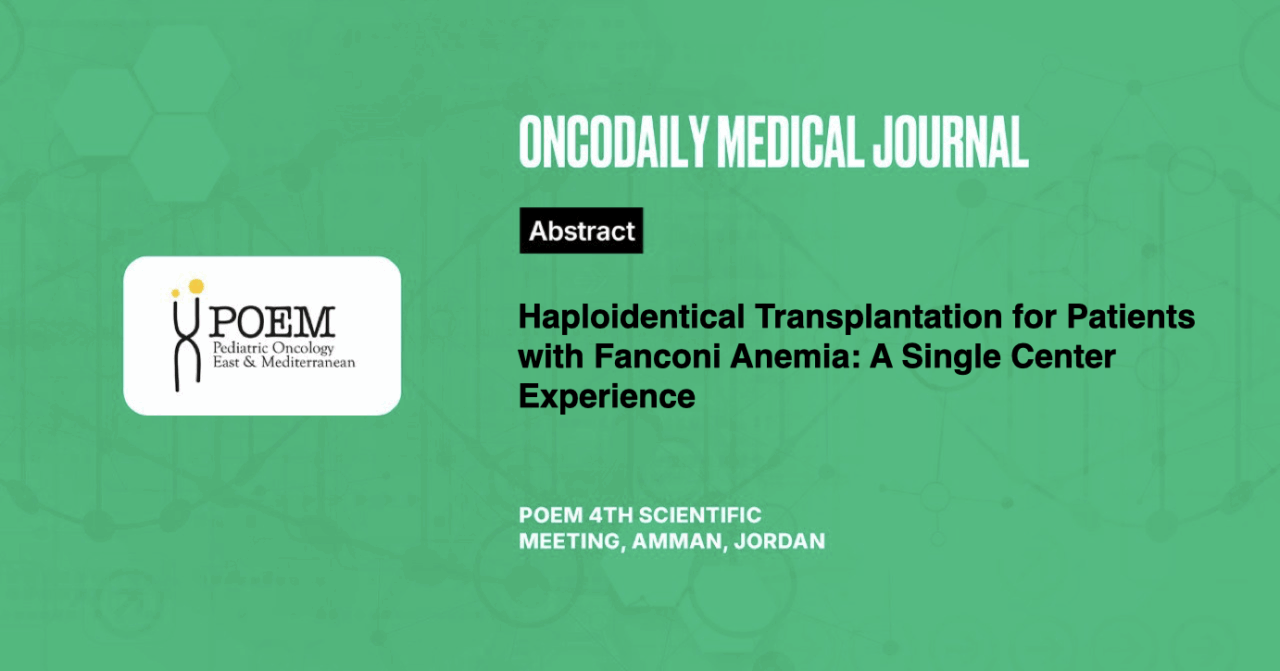Haploidentical Transplantation for Patients with Fanconi Anemia: A Single Center Experience
Abstract
Introduction: Fanconi Anemia (FA) is a heterogeneous disorder with bone marrow failure. Allogeneic hematopoietic stem cell transplantation (allo-HSCT) remains the only curative therapy for the hematological complications of FA patients. Haploidentical transplantation has expanded the donor pool options.
Methodology: A retrospective analysis of FA patients who underwent haploidentical allo-HSCT at the King Hussein Cancer Center (2005–2024). Data on patient outcomes, preparative regimens, and post-transplant complications were collected and analyzed.
Results: Eight FA patients underwent haploidentical allo-HSCT, with 75% overall survival. Five patients received upfront T-cell-replete transplants with post-transplant cyclophosphamide (PT-CY).The preparative regimen included Fludarabine and single-fraction total body irradiation.
Cyclophosphamide, initially part of the regimen, was later omitted due to toxicity. Rabbit antithymocyte globulin(r-ATG) was added for the last two patients. All patients received Calcineurin inhibitors and Mycophenolate mofetil for graft-versus-host disease (GVHD) prophylaxis starting on day 5 post-transplant, it was adjusted ti be started earlier post-transplant for the last patient.
Three patients underwent second rescue haploidentical transplant; PT-CY was used in one patient and Alemtuzumab in the stem cell bag was used two patients for T-cell depletion.
Complications included acute GVHD in seven patients, chronic GVHD in six patients, and CMV reactivation in six patients. Mortality occurred in three patients: one due to chemotherapy toxicity before engraftment, one from extensive chronic GVHD and viral reactivation 8 months post-transplant, and one from squamous cell carcinoma 5 years post-transplant in the rescue group.
Conclusion: T-cell-replete haploidentical donor transplantation with PT-CY is feasible for FA patients lacking matched donor. Modifications in the timing of r-ATG and GVHD prophylaxis may reduce toxicity and improve outcomes.





